<<PREVIOUS -
HOME -
CONTENTS -
NEXT>>
OMSI ASTROIMAGING -
![]()
<<PREVIOUS -
HOME -
CONTENTS -
NEXT>>
OMSI ASTROIMAGING -
![]()
OMSI Astrophotography Conference 2011
Oregon Museum of Science and Industry (OMSI) Classroom 2 1945 SE Water Avenue Portland, OR 97214-3354, USA Updated on April 10, 2011 |
|
|
|
||
|
|
|
|
|
|
|
|
|
|
|
|
|
|
|
|
|
|
|
|
|
|
| |
|
|
|
|
|
|
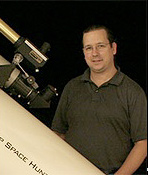
Neil Heacock is an IT professional who moved out of the city for the first time in 2003. After living in LA, Seattle and Portland, he moved to somewhat more rural area of Clark County and really saw the stars. This birthed a strong interest in astronomy which has continued to grow and develop over the past 6 years. In 2006 Neil began to dabble in astrophotography and after attending the 2007 Northwest Astrophotography Conference his imaging stared to mature. Neil primarily considers himself a visual observer but with such amazing and easy to use imaging systems available he now images with one setup while observing with another. Neil uses a modified Canon 1000D DSLR camera and the images he produces are excellent. |
|
|
|
|
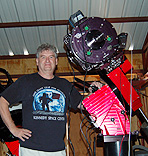
Tom has been involved in astronomy for over 25 years, first visually, and shortly thereafter succumbing to imaging when Halley's comet showed up. Tom has used many CCD cameras over the last 20, starting with the tiny SBIG ST-4. Currently, he images from his backyard in Corvallis, his observatory in central Oregon that is shared with 4 other astronomers, or remotely using his 10" RC in New Mexico. Tom has been published in Sky and Telescope, the Astronomy Magazine web site, Astrophoto Insight, and numerous books and articles pertaining to astronomy. An EE by training, Tom is currently a program manager in R&D at Hewlett Packard. |
|
|
|
|
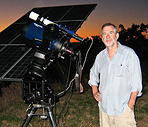
Sean Curry lives in the beautiful Wagner Valley in Southern Oregon. He got his first telescope upon moving there in 2002, and began imaging with a modified DSLR in 2006. Sean has recently upgraded his equipment to include an AP900 Mount, a Tak FSQ106, and a QSI 583wsg camera. Once the skies clear from the Oregon Winter, he hope to take his imaging to a new level. Sean supports his astronomy hobby as a Lecturer in GIS at Southern Oregon University, and as a researcher at the University of the Pacific. |
|
|
|
|
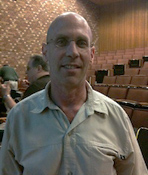
Tom is an amateur astrophysicist, amateur spectroscoper, and an amateur observer. Also, Tom is a professional software developer who's been at it decades. Tom got interested in spectroscopy, but found existing software difficult to use, prone to crash, not particularly user-friendly, and it often was in a foreign language. So Tom created RSpec that worked better for the backyard astronomer. Photo credit: Greg Scheiderer
|
|
|
|
|
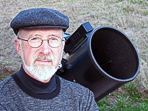
Ken Hose
Ken Hose has been active in visual astronomy for the last 10 years or so. He now has an observatory and taken up astro-imaging. As an engineer, he has an interest in the scientific aspects of the hobby and has a special interest in detecting exoplanet transits. |
|
|
|
|

Duncan Kitchin has been taking astro images since 2003, starting with a point and shoot digital camera. Since 2005, he has been capturing deep sky images with a modified DSLR and various telescopes, switching more recently to a dedicated CCD camera. His current interests include capturing narrowband images from his back yard in heavily light polluted Beaverton. |
|
|
|
|
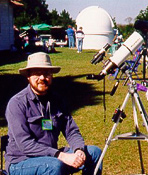
David Haworth enjoys astronomy imaging and processing those images to bring out details that cannot be seen easily by visual observing with the same size optics. David Haworth started astroimaging with a Cookbook CCD camera he built in 1996 and since then has used many types of cameras to image the sky. David wrote Chapter 2: "Afocal Photography with Digital Cameras" in the second edition of "The Art and Science of CCD Astronomy" which was published in December 2005. David's images have appeared in magazine front covers, articles, books, catalogs, videos, music CD covers, T-shirts, other web sites, etc. |
|